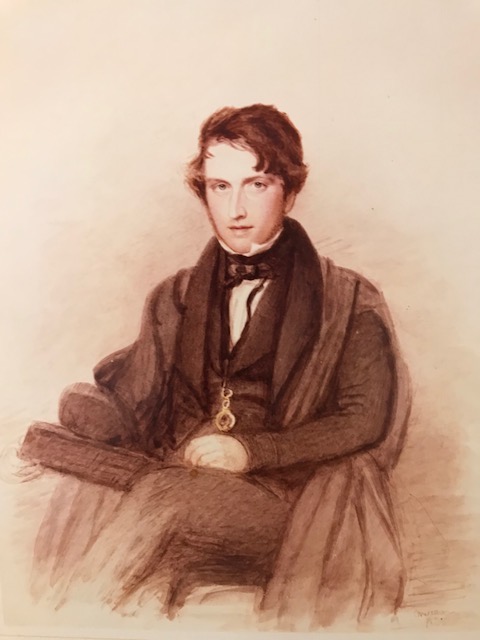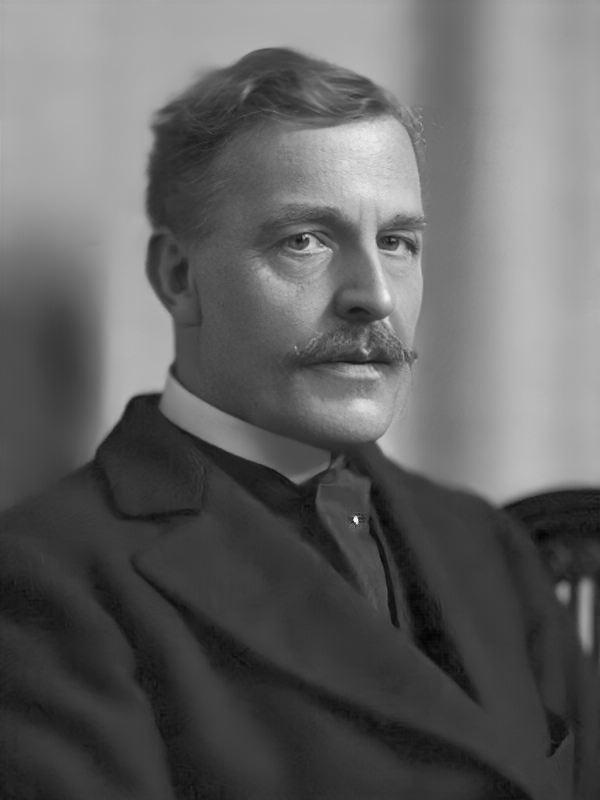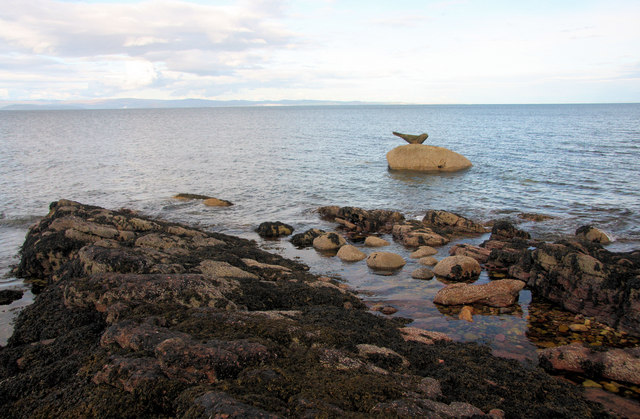|
Joan Eardley
Joan Kathleen Harding Eardley (18 May 192116 August 1963) was a British artist noted for her portraiture of street children in Glasgow and for her landscapes of the fishing village of Catterline and surroundings on the North-East coast of Scotland. One of Scotland's most enduringly popular artists, her career was cut short by breast cancer. Her artistic career had three distinct phases. The first was from 1940 when she enrolled at the Glasgow School of Art through to 1949 when she had a successful exhibition of paintings created while travelling in Italy. From 1950 to 1957, Eardley's work focused on the city of Glasgow and in particular the slum area of Townhead. In the late 1950s, while still living in Glasgow, she spent much time in Catterline before moving there permanently in 1961. During the last years of her life, seascapes and landscapes painted in and around Catterline dominated her output. Biography Early life Joan Eardley was born at Bailing Hill Farm in Warnham, Susse ... [...More Info...] [...Related Items...] OR: [Wikipedia] [Google] [Baidu] |
Warnham
Warnham is a village and civil parish in the Horsham district of West Sussex, England. The village is centred north-northwest of Horsham, from London, to the west of the A24 road. Other named settlements within the parish include the hamlets of Goosegreen, Kingsfold and Winterfold as well as parts of Strood Green and Rowhook. The area is in the northwest of the Weald, a gently sloped remnant forest in southeast England and largely a plain by erosion. The parish has a land area of 1980 hectares (4892 acres). In the 2001 census 1958 people lived in 784 households, of whom 935 were economically active. At the 2011 Census the population was 2,068. Warnham has a number of shops, including a village store and butcher, two pubs ''The Sussex Oak'' and ''The Greets Inn'', a primary school and Warnham railway station lies nearly a mile away from the village, on the Sutton & Mole Valley Lines. The station was built primarily for the brick works, which had some sidings until rec ... [...More Info...] [...Related Items...] OR: [Wikipedia] [Google] [Baidu] |
Scottish Colourists
The Scottish Colourists were a group of four painters, three from Edinburgh, whose Post-Impressionist work, though not universally recognised initially, came to have a formative influence on contemporary Scottish art and culture. The four artists, Francis Cadell, John Duncan Fergusson, Leslie Hunter and Samuel Peploe, were prolific painters spanning the turn of the twentieth century until the beginnings of World War II. While now banded as one group with a collective achievement and a common sense of British identity, it is a misnomer to believe their artwork or their painterly careers were heterogeneous. Generally however, the group shared a common interest in the artistic developments occurring in France and are shown to dabble with different styles such as Cubism, Post-Impressionism, Fauvism, and Futurism. The movement seemed to fall out of favour by the end of World War II, and did not experience a revival until the 1980s. Their works are currently held in a number of Scottis ... [...More Info...] [...Related Items...] OR: [Wikipedia] [Google] [Baidu] |
Arbroath
Arbroath () or Aberbrothock ( gd, Obar Bhrothaig ) is a former royal burgh and the largest town in the council area of Angus, Scotland, with a population of 23,902. It lies on the North Sea coast some ENE of Dundee and SSW of Aberdeen. There is evidence of Iron Age settlement, but its history as a town began with the founding of Arbroath Abbey in 1178. It grew much during the Industrial Revolution through the flax and then the jute industry and the engineering sector. A new harbour created in 1839; by the 20th century, Arbroath was one of Scotland's larger fishing ports. It is notable for the Declaration of Arbroath and the Arbroath smokie. Arbroath Football Club holds the world record for the number of goals scored in a professional football match: 36–0 against Bon Accord of Aberdeen in the Scottish Cup in 1885 History Toponymy The earliest recorded name was 'Aberbrothock', referring to the Brothock Burn that runs through the town. The prefix ''Aber'' derived ei ... [...More Info...] [...Related Items...] OR: [Wikipedia] [Google] [Baidu] |
Hospitalfield House
Hospitalfield House is an arts centre and historic house in Arbroath, Angus, Scotland, regarded as "one of the finest country houses in Scotland". It is believed to be "Scotland's first school of fine art" and the first art college in Britain. It is a registered charity under Scottish law. A range of prominent Scottish artists have worked there, including Joan Eardley, Peter Howson, Will Maclean, Robert Colquhoun, Robert MacBryde, William Gear, Alasdair Gray, Wendy McMurdo, and Callum Innes. Early history A hospital was founded on the site in the 13th century by monks from nearby Arbroath Abbey as a leprosy and plague hospice called the Hospital of St John the Baptist. The property was purchased by the Reverend James Fraser around 1664 and was subsequently owned by successive generations of the Fraser family. Walter Scott visited the house in 1813, and he used it as the model for "Monkbarns" in his novel ''The Antiquary'' (1816). 19th century The last Fraser to own the property ... [...More Info...] [...Related Items...] OR: [Wikipedia] [Google] [Baidu] |
Wood Engraving
Wood engraving is a printmaking technique, in which an artist works an image or ''matrix'' of images into a block of wood. Functionally a variety of woodcut, it uses relief printing, where the artist applies ink to the face of the block and prints using relatively low pressure. By contrast, ordinary engraving, like etching, uses a metal plate for the matrix, and is printed by the intaglio method, where the ink fills the ''valleys'', the removed areas. As a result, wood engravings deteriorate less quickly than copper-plate engravings, and have a distinctive white-on-black character. Thomas Bewick developed the wood engraving technique in Great Britain at the end of the 18th century. His work differed from earlier woodcuts in two key ways. First, rather than using woodcarving tools such as knives, Bewick used an engraver's burin (graver). With this, he could create thin delicate lines, often creating large dark areas in the composition. Second, wood engraving traditionally use ... [...More Info...] [...Related Items...] OR: [Wikipedia] [Google] [Baidu] |
Royal Glasgow Institute Of The Fine Arts
The Royal Glasgow Institute of the Fine Arts (RGI) is an independent organisation in Glasgow, founded in 1861, which promotes contemporary art and artists in Scotland. The institute organizes the largest and most prestigious annual art exhibition in Scotland - open to all artists. The RGI also owns and runs the Kelly Gallery. Situated on Douglas Street in Glasgow City Centre, the Kelly Gallery hosts a running programme of exhibitions and events. The award of RGI is made to artists for artistic merit and their dedication to the institute. There is a corpus of fifty such awards. Any vacancy is filled through persons being proposed, demonstrating work, and being elected at a specially convened meeting of RGIs. Early days By the middle of the 19th century, Glasgow had become the most important center for trade and industry in Scotland. The city had numerous theatres, concert halls and libraries, but no regular exhibitions for the works of contemporary painters and sculptors. From ... [...More Info...] [...Related Items...] OR: [Wikipedia] [Google] [Baidu] |
Ship Camouflage
Ship camouflage is a form of military deception in which a ship is painted in one or more colors in order to obscure or confuse an enemy's visual observation. Several types of marine camouflage have been used or prototyped: blending or crypsis, in which a paint scheme attempts to hide a ship from view; deception, in which a ship is made to look smaller or, as with the Q-ships, to mimic merchantmen; and dazzle, a chaotic paint scheme which tries to confuse any estimate of distance, direction, or heading. Counterillumination, to hide a darkened ship against the slightly brighter night sky, was trialled by the Royal Canadian Navy in diffused lighting camouflage. Ships were sometimes camouflaged in classical times. Mediterranean pirate ships were sometimes painted blue-gray for concealment. Vegetius records that Julius Caesar's scout ships were painted bluish-green when gathering intelligence along the coast of Britain during the Gallic Wars. Ships were sometimes painted deceptively ... [...More Info...] [...Related Items...] OR: [Wikipedia] [Google] [Baidu] |
Jordanhill Teacher Training College
Jordanhill Campus is an historic estate within the boundaries of Jordanhill, Glasgow, Scotland, which developed as a country estate. It is best known and most recently used as the home to the Faculty of Education of the University of Strathclyde. Empty since 2012, after all previous educational activities were moved to the John Anderson Campus, the site which includes the Grade B listed David Stow building, is now up for sale with "minded to approve" planning permission for up to 364 new homes across 12 plots. History Jordanhill Estate:1546-1913 Crawfords of Jordanhill In 1546 Lawrence Crawford of Kilbirnie founded a chaplainry at Drumry, and to sustain it endowed it with the freehold ownership of land at Jordanhill, which then accumulated rent at a rate of £5 per annum. His sixth son Thomas Crawford was a soldier who led the 1571 capture of Dumbarton Castle, who had previously acquired the lands at Jordanhill from the chaplain of Drumry in 1562. There he built a house, ... [...More Info...] [...Related Items...] OR: [Wikipedia] [Google] [Baidu] |
Sir James L
''Sir'' is a formal honorific address in English for men, derived from Sire in the High Middle Ages. Both are derived from the old French "Sieur" (Lord), brought to England by the French-speaking Normans, and which now exist in French only as part of "Monsieur", with the equivalent "My Lord" in English. Traditionally, as governed by law and custom, Sir is used for men titled as knights, often as members of orders of chivalry, as well as later applied to baronets and other offices. As the female equivalent for knighthood is damehood, the female equivalent term is typically Dame. The wife of a knight or baronet tends to be addressed as Lady, although a few exceptions and interchanges of these uses exist. Additionally, since the late modern period, Sir has been used as a respectful way to address a man of superior social status or military rank. Equivalent terms of address for women are Madam (shortened to Ma'am), in addition to social honorifics such as Mrs, Ms or Miss. Etymolo ... [...More Info...] [...Related Items...] OR: [Wikipedia] [Google] [Baidu] |
James Guthrie (artist)
Sir James Guthrie (10 June 1859 – 6 September 1930) was a Scottish painter, associated with the Glasgow Boys. He is best known in his own lifetime for his portraiture, although today more generally regarded as a painter of Scottish Realism. Early life and education Guthrie was born in Greenock, the youngest son of the Rev. John Guthrie, a minister of the Evangelical Union church, and Anne Orr. He originally enrolled at Glasgow University to study law, but in 1877 abandoned this in favour of painting. Unlike many of his contemporaries he did not study in Paris, being mostly self-taught, although he was mentored for a short time by James Drummond in Glasgow and then John Pettie in London.Biography ("Helensburgh heroes") In 1879, he moved to London to study painting. during the summer he painted at rural location ... [...More Info...] [...Related Items...] OR: [Wikipedia] [Google] [Baidu] |
Isle Of Arran
The Isle of Arran (; sco, Isle o Arran; gd, Eilean Arainn) or simply Arran is an island off the west coast of Scotland. It is the largest island in the Firth of Clyde and the seventh-largest Scottish island, at . Historically part of Buteshire, it is in the unitary council area of North Ayrshire. In the 2011 census it had a resident population of 4,629. Though culturally and physically similar to the Hebrides, it is separated from them by the Kintyre peninsula. Often referred to as "Scotland in Miniature", the island is divided into highland and lowland areas by the Highland Boundary Fault and has been described as a "geologist's paradise".Haswell-Smith (2004) pp. 11–17. Arran has been continuously inhabited since the early Neolithic period. Numerous prehistoric remains have been found. From the 6th century onwards, Goidelic-speaking peoples from Ireland colonised it and it became a centre of religious activity. In the troubled Viking Age, Arran became the property of t ... [...More Info...] [...Related Items...] OR: [Wikipedia] [Google] [Baidu] |
Corrie, Arran
Corrie ( gd, An Coire) is a village on the north east coast of the Isle of Arran in Scotland, north of Brodick. It lies due east under the island's highest mountain, Goat Fell. A path from High Corrie to the south, provides access to the hillside. Corrie, and its northern neighbour, Sannox, lie approximately halfway between Brodick and Lochranza. History The village used to be a regular stop for steamers circumnavigating the island, passengers embarking by way of a rowing boat from the "ferry rock". The ferry rock is located midway between the village's two quays. The southernmost quay is known as the "sandstone quay". This harbour and quay used to be the location where sandstone blocks from the nearby quarry were shipped to the mainland, and huge pieces of stone can still be seen. (Sandstone from Corrie was also used in the construction of Kirn & Sandbank Parish Church in Argyll and Bute.) The sheep bollards on the quay walls were moved to Corrie after they were used in the 1 ... [...More Info...] [...Related Items...] OR: [Wikipedia] [Google] [Baidu] |






_cropped.jpg)



